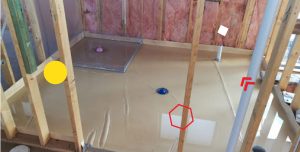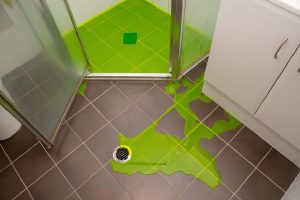The Standard Waterproofing for a Bathroom in Australia
Introduction
When it comes to renovating or constructing a bathroom in Australia, one of the most critical considerations is waterproofing. Proper waterproofing is essential to prevent water damage, mold growth, and other issues that can compromise the structural integrity and safety of your bathroom. In this article, we will explore the standard waterproofing practices and regulations for bathrooms in Australia.

Why Waterproofing is Crucial
Waterproofing is not just a matter of aesthetics; it’s a matter of protecting your home and ensuring a healthy living environment. Without adequate waterproofing, water can seep into the building structure, causing damage to walls, floors, and ceilings. Additionally, water damage can lead to mold growth, which can pose serious health risks to occupants.
In Australia, where the climate can be humid and prone to heavy rainfall, proper bathroom waterproofing is especially important. Without it, you may face costly repairs and health hazards in the long run.
Australian Standards for Bathroom Waterproofing
In Australia, there are specific standards and regulations governing bathroom waterproofing to ensure the highest level of protection. The key standard that addresses bathroom waterproofing is AS 3740-2010 “Waterproofing of Wet Areas in Residential Buildings.”
AS 3740-2010: Overview
AS 3740-2010 sets out the requirements for waterproofing in wet areas of residential buildings. Wet areas, as defined by the standard, include bathrooms, laundries, and toilets. Here are some of the critical aspects covered by this standard:
Material and Product Requirements: The standard specifies the types of materials and products that can be used for waterproofing. This includes membranes, sealants, and adhesives. All products must comply with the relevant Australian Standards.
Design and Installation: AS 3740-2010 provides guidelines for the design and installation of waterproofing systems. It includes information on substrate preparation, application methods, and curing times.
Surface Preparation: Proper surface preparation is essential for effective waterproofing. The standard outlines the steps to ensure the substrate is clean, dry, and structurally sound before applying waterproofing.
Testing and Inspection: The standard also requires testing and inspection to confirm that the waterproofing system meets the specified performance criteria. This may include water leak testing and visual inspections.

Maintenance and Repair: AS 3740-2010 offers guidance on the maintenance and repair of waterproofing systems. Regular inspections and maintenance can help prevent issues before they become major problems.
Professional Installation
To comply with AS 3740-2010, it’s crucial to have waterproofing work carried out by qualified professionals. They have the knowledge and expertise to ensure that the waterproofing system is installed correctly and meets all the necessary requirements. Hiring a licensed and experienced waterproofing contractor is a wise investment to protect your bathroom and your home.
Common Waterproofing Methods
Several common methods are used for bathroom waterproofing in Australia. The choice of method depends on factors such as the type of substrate, budget, and personal preference. Some of the most common waterproofing methods include:
Liquid Waterproofing Membranes: Liquid membranes are applied as a liquid or semi-liquid substance and then cure to form a waterproof layer. They are versatile and can be used on a variety of substrates, including concrete, cement sheets, and plasterboard.
Sheet Membranes: Sheet membranes are made of materials like polyethylene or bituminous sheeting. They are applied to the substrate in large sheets and are particularly effective for providing waterproofing in shower areas and around the bath.
Cementitious Waterproofing: Cementitious waterproofing involves applying a cement-based mixture to create a waterproof barrier. This method is suitable for concrete substrates and is often used in combination with other waterproofing methods.
Hybrid Systems: Some waterproofing projects may benefit from a combination of methods. Hybrid systems use multiple types of waterproofing to ensure comprehensive protection.
Maintenance and Inspection
Even with the best waterproofing system in place, regular maintenance and inspection are essential to keep your bathroom in good condition. Here are some tips for maintaining your bathroom’s waterproofing:
Inspect for Damage: Regularly inspect the bathroom for any signs of damage or wear and tear in the waterproofing system. Look for cracks, peeling, or discoloration.
Caulking and Sealing: Check the condition of caulking and sealing around fixtures, such as sinks, tubs, and showers. Replace any damaged or deteriorated caulk.
Drain Maintenance: Ensure that drains are free from blockages and are functioning correctly. Poor drainage can lead to water pooling, which may compromise the waterproofing. https://allsydneywaterproofing.com/bathroom-waterproofing-sydney/
Grout and Tile Maintenance: Keep grout and tiles in good condition. Damaged or missing tiles and grout can allow water to penetrate the substrate.
Ventilation: Proper ventilation in the bathroom helps reduce humidity, which can contribute to mold growth. Make sure your bathroom has adequate ventilation systems, such as exhaust fans or windows.
Conclusion
In Australia, proper bathroom waterproofing is not just a matter of aesthetics; it’s a legal and safety requirement. AS 3740-2010 sets the standard for ensuring that bathrooms in residential buildings are adequately protected from water damage and mold. By adhering to these standards and choosing the right waterproofing method, you can enjoy a beautiful, safe, and long-lasting bathroom. Remember that professional installation and regular maintenance are key to preserving the integrity of your bathroom’s waterproofing system. Don’t compromise on the health and safety of your home – make sure your bathroom is properly waterproofed.

